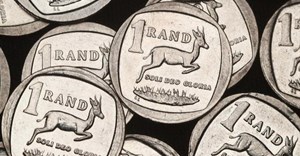Trending
Elections 2024
Jobs
- Insurance Sales Agent Nelspruit
- Sales and Service Consultants George
- Senior Bookkeeper Pretoria North
- Business Sales Consultant Johannesburg
- Business Sales Consultant Ermelo
- Business Sales Consultant Rustenburg
- Management Accountant Cape Town
- Administrator George
- Finance Manager East Rand
- Bookkeeper / Admin Clerk Witbank
Global and South African economic outlook
Real GDP growth for the world is now expected at 3% in 2013 and 3.8% in 2014, from 3.1% in 2012. The developed economies, which contribute to half of the global economy on a purchasing power parity basis, are expected to grow at a rate of 1% in 2013 and 1.9% in 2014, from 1.2% in 2012. While the euro area is expected to exit its recession in Q2, thanks to a turnaround in Germany, that economy is expected to contract at the same -0.5% pace in 2013 as it did in 2012 before expanding by 1.3% in 2014.Improved contributions are expected from the UK as it continues to pull itself up by its bootstraps (1.1% in 2013 and 2.1% in 2014, from 0.2% in 2014) and from Japan where the massive stimulus packages there are expected to sustain growth at a 2.1% pace over each of the next two years (2012: 1.9%).
Slower US growth
A slower rate of growth of 1.6% is expected out of the US this year as the sequester bites harder in Q2 (2012: 2.2%), but the economic recovery of the world's largest economy is on track, albeit slowly, and an economic expansion of 2.3% is forecast for 2014.One key development that has rattled the markets has been the indication by Federal Reserve Bank (Fed) chairman Ben Bernanke in a June Federal Open Market Committee ("FOMC") statement that the current level of asset purchases (quantitative easing or QE) would be reduced in line with developments on the inflation front and in the labour market. The FOMC said it would continue to purchase additional agency mortgage-backed securities at a pace of USD40 billion per month and longer-term treasury securities at a pace of USD45 billion per month, but the magnitude of future purchases would depend upon price stability and substantial improvements in the labour market. In its statement, the FOMC noted that economic activity had been expanding at a moderate pace and labour market conditions had shown further improvement in recent months, but, on balance, the unemployment rate remained elevated. In spite of the implication of a slow withdrawal of easy monetary policy, the markets began contemplating the start of a tightening of monetary policy rather than a protracted "tapering" of monetary policy.
Federal Reserve Bank presidents have been at pains to explain that even with an end to QE, monetary policy will remain accommodative for some time. The tapering of asset purchases and the first rate hike will depend upon economic developments. The Fed currently anticipates that the exceptionally low target for the federal funds rate will be appropriate at least as long as the unemployment rate remains above 6.5%. The implication is that policy will only be withdrawn when the economy can stand on its own two feet and that will further imply that the market will have some underlying fundamental support rather than a monetary-policy crutch. For investors, the withdrawal of QE should be a positive sign that the world's largest economy is firmly in recovery mode. As time passes and the markets come to believe in the Fed's assertions about the relationship between monetary policy and the real economy, the better the prospects will be for the financial markets. A September start to the withdrawal of asset purchases is now likely with an end to the asset-buying programme in March 2014. The Fed's balance sheet, however, and the near-zero level of federal reserve interest rates are set to be maintained for a much longer period.
Economic expansion in Brazil and India
The pace of growth in the world's developing economies is expected to be maintained at a 5% level in 2013 with some acceleration to 5.6% in 2014.An expected slower rate of growth in China (7.4% in both 2013 and 2014 from 7.8% in 2012) should be offset to some degree by a faster pace of economic expansion in the likes of Brazil and India. The strength of the Chinese economy has come under the spotlight more recently and one concern for economists and market watchers has been the developments in Chinese interest rate markets. The interbank rate, SHIBOR, shot through the roof during the course of June as liquidity in the banking system was squeezed. This was an intentional move by the People's Bank of China (PBoC) to curb the dramatic growth in credit being extended by the shadow banking industry (non-bank financial intermediaries). The shadow banking industry is less regulated than the formal banking industry, but, ultimately, funding comes from the big banks and this is where the PBoC put on the squeeze. Quite apart from the huge growth in lending, the intermediaries were using short-term funds to finance long-term deals as well as packaging some of their funding deals into investment products with attractive yields. In a world that has recently lived through a sub-prime-induced financial and banking crisis, it wasn't difficult for the PBoC to see how the story could quickly turn ugly.
After turning the screws a bit, the PBoC did provide liquidity to the system, but it did come with warnings to correct lending behaviour and promote stability in the monetary environment. What was disconcerting for the market about the PBoC's action was that their liquidity squeeze was a brief tightening of monetary policy in an economy where growth is slowing (perilously close to the authorities' 7.5% target) and where it is likely that looser monetary policy can still be justified. While the central bank had the longer term prosperity of the nation in mind, the short-term cracking of the whip sent its own shudders through the market and the Shanghai Composite Index fell 14% over the month of June. For the rest of the world, this brief heavy-handedness raised questions about China's economic growth rate, the level of its demand for commodities and the impact of a slower growing China on the rest of the world. The Chinese economy is transitioning from an investment and export-led economy to one more driven by the services sector and household consumption and that is going to take some time to play itself out. In the interim there could be increased volatility in economic indicators and bouts of pain for the economy itself. What is important is that China's new leaders have a tolerance for that short-term pain in the interests of longer term economic sustainability (which the markets may not have). These developments do justify a cautious view on China and risks to the economic outlook do appear to be to the downside.
SA not an island
The South African economy is not an island and our current low rate of growth can partially be attributed to the slow rate of growth in the global economy. Slowing growth in China and recessionary conditions in Europe, two of the largest importers of our goods, have hurt exports and domestic manufacturing production. Slower global growth has also translated into a lower demand for commodities and commodity prices have fallen. That is further hurt export revenues, but it is also made for less profitable mining production, mining closures and retrenchments. Lower domestic consumer confidence and business confidence in an uncertain global and domestic economic environment has meant that consumers have postponed purchases of big ticket items while business has postponed expansion and hiring plans - adding to the general slowdown. The highly indebted nature of households has exacerbated the situation in that even in a historically low interest rate environment, consumers are running out of capacity to borrow more (and hence demand more goods and services). The result is that the production side of the economy is weak (mining and manufacturing) and the consumption side (household demand) is weak. With the country running a substantial current account deficit as well as a continued budget deficit, there is little room for the government to stimulate demand through looser fiscal policy (a chief concern of the ratings agencies). It is unlikely that lowering domestic interest rates further will have a significant impact on demand either and the interest rate status quo looks set to be maintained well into 2014. Domestic consumer price inflation is flirting with the upper end of the target band and while it may breach 6% in the short term, the South African Reserve Bank sees no real demand-pull on core price inflation and would be loath to consider hiking rates pre-emptively. Growth forecasts for South Africa are being revised lower across the board (2% for 2013 says the International Monetary Fund) and the risks to our expectations of 2.3% growth in 2013 and 3.2% in 2014 are to the downside (2012: 2.5%). It seems that the South African economy will only get some respite once the global economy picks up pace again and we need to have our house in order then to benefit from that uptick, when it eventually comes.

















